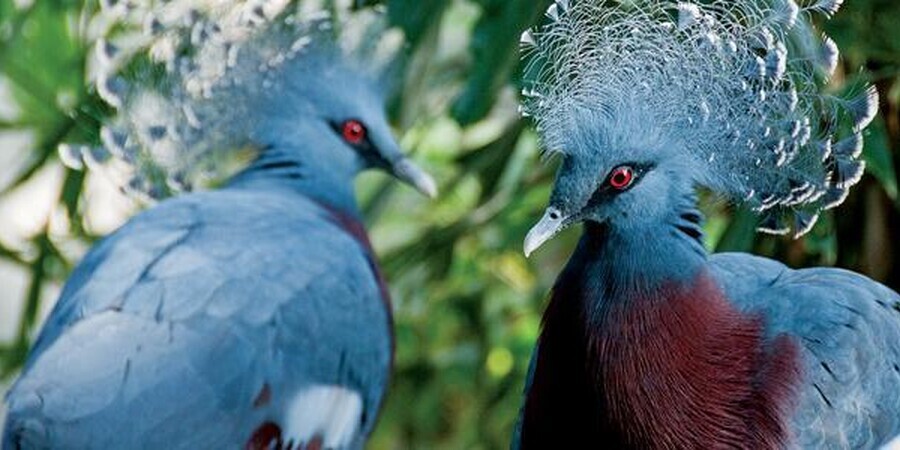Philadelphia, PA—McNeil Avian Center's 17.5-million facility incorporates lush, walk-through habitats where visitors can discover more than 100 spectacular birds from around the world, many of them rare and endangered. In the multi-sensory 4-D Migration Theater, viewers can follow Otis the Oriole on his first migration south from where he hatched in Fairmount Park.
McNeil Avian Center incorporates lush walk-through habitats where visitors can discover over 100 spectacular birds worldwide, many of which are rare and endangered. The exhibit immerses visitors in exotic landscapes of color and sound, with birds including fantastic rhinoceros hornbills, striking Victoria crowned pigeons and nest-crazy hammerkops. Closer to home, in the multi-sensory 4-D Migration Theater, viewers follow Otis the oriole on his first migration south from where he hatched in Fairmount Park.
Our bird keepers do more than feed their charges—they work closely with many birds to train behaviors that help us take better care of them, like stepping on a scale voluntarily so we can monitor weight. Keepers can also use the same principles to cue birds to show off their fascinating natural behaviors. Watch a hammerkop add a stick to its giant nest, or you might be there when a hornbill catches insects or a grape out of the air.
About the Zoo
The Philadelphia Zoo, located in the Centennial District of Philadelphia, Pennsylvania, on the Schuylkill River's west bank, was the United States' first zoo. Chartered by the Commonwealth of Pennsylvania on March 21, 1859, its opening was delayed by the American Civil War until July 1, 1874. It opened with 1,000 animals and an admission price of 25 cents. For a brief time, the zoo also housed animals brought over from safari on behalf of the Smithsonian Institution, which had not yet built the National Zoo in the 1850s.
The Philadelphia Zoo is one of the premier zoos in the world for breeding animals that have been found difficult to breed in captivity. The zoo also works with many groups worldwide to protect the animals' natural habitats in their care.
The zoo is 42 acres (17 ha) and home to more than 1,300 animals, many rare and endangered. It features a children's zoo, a paddleboat lake, a rainforest-themed carousel, and many interactive and educational exhibits.


